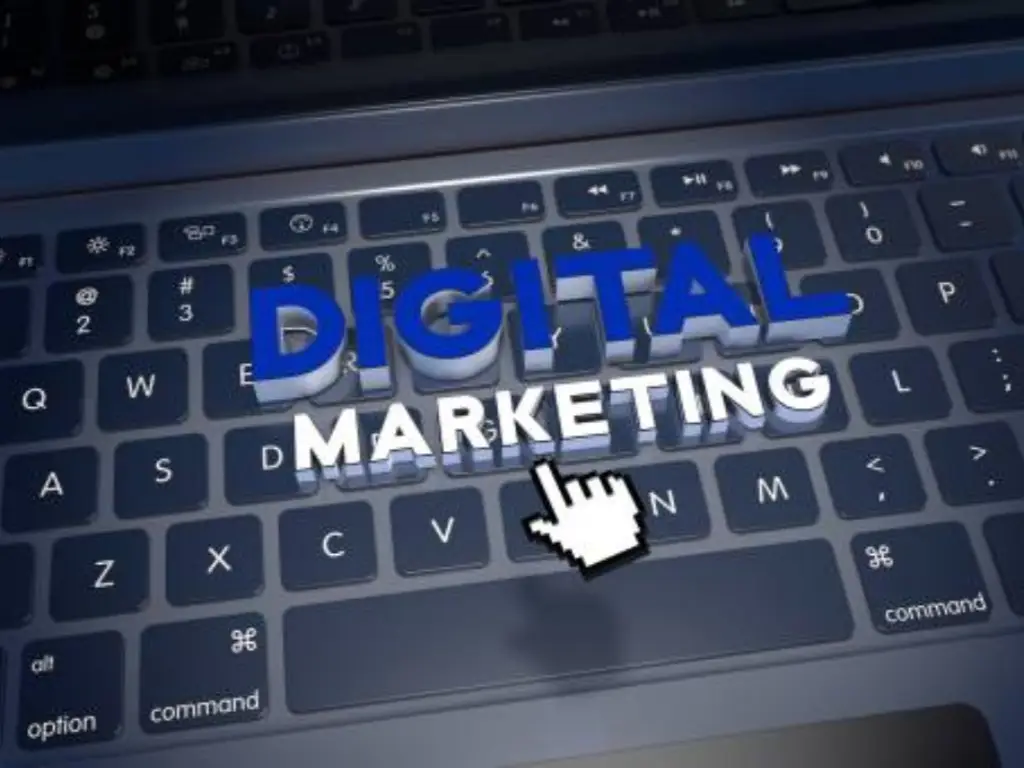Introduction
One of the most basic decisions you will make is where to establish your online business. It determines your expenses, the potential of your brand, your customer relationship, and your final growth ability. When it comes to the e-commerce giant, two names always come to mind, and they are two opposite philosophies: Etsy and Shopify.
One of them is a busy, edited place with millions of customers. The other is a potent instrument for creating an independent empire.
It is not a mere feature checklist comparison. This is a comparison of two different business models. Etsy is an online retailer; Shopify is an online store. Choosing one or the other, or even choosing to do both, involves a sober assessment of what you are selling, what you are hoping to achieve, what you can afford, and how much you are prepared to take charge of your own fate. This guide will break down each of the most important aspects of the Etsy vs Shopify argument to see which platform will actually enable your business to win.
The Core Choice: Built-in Market vs. Your Own Brand
The first difference that all other differences are based on is the nature of platform you are entering.
Etsy marketplace is a huge, one-stop shop. When you create an etsy store, you are establishing an online booth in a large, curated marketplace. This setting is accompanied by a massive, established base of customers who go to Etsy.com with the particular purpose of finding and buying products. They do not seek your brand, they seek a product, and it is the task of Etsy to match them with it.
Shopify, on the other hand, offers the software and infrastructure to create your own site. It is not a booth in a market; it is your own house, on your own property, your name on the door. Your shopify store is a stand-alone store and you are in charge of all the aspects of its existence. Customers arriving are there because of you. This is a structure that gives you freedom, but it also puts the responsibility of being seen squarely on your hands. You are not entering an existing market, you are building your own online shop starting with nothing.
The Real Cost: A Detailed Fee & Pricing Breakdown
Financial considerations are paramount, and the two platforms have starkly different cost structures.
Shopify’s Model: Monthly Plans + Payment Processing Fees

Shopify is a transparent monthly subscription platform. You can access the platform with a recurring monthly subscription fee, and tiered plans (such as the Basic Plan, ‘Shopify’, and ‘Advanced’) have more features as you grow. This is usually available to you on a free trial.
Payment processing is the most important cost variable. When you use the native Shopify Payments gateway, you are charged a regular processing fee on credit card payments but no transaction fee by Shopify itself. In case you want to use a third-party gateway (such as PayPal), Shopify will etsy charge (or, to be more precise, Shopify will charge) a fee on top of what your processor charges. This design makes you adopt their built-in system that makes things easier. The initial expenses are obvious: your subscription package and your processing charges.
Etsy’s Model: Listing, Transaction, Offsite Ads & Payment Fees

Etsy seems attractive to a small business because of its lower start-up expenses. A typical shop has no monthly fee (although there is an Etsy Plus plan, which provides some small benefits, such as listing credits). Nevertheless, the business model of Etsy is constructed on a set of smaller, a la carte charges that can quickly add up.
- Listing Fees: You pay a fee (e.g., $0.20) on each of your product listings, but this expires after four months. In case the item is sold or expires, you have to pay again to renew it.
- Transaction Fees: Etsy charges a percentage of the overall sale price (including shipping and wrapping gifts).
- Payment Processing Fees: When you use Etsy Payments (which is required in most locations), you are charged an additional fee to process the payment of the customer.
- Offsite Ads Fees: This is the most controversial fee. Once you have achieved a specific sales level, Etsy requires you to join its Offsite Ads program. When a sale is made as a result of one of these advertisements, you will pay a high percentage (e.g., 12-15%) on that order. This may be in the form of abrupt increased transaction charges which you have no control over.
Although Shopify has a predictable monthly subscription of shopify, the variable costs of Etsy may complicate the process of predicting profitability, particularly when you are expanding your online sales. Nevertheless, as a new seller, Etsy has a pay as you go model that has reduced charges to begin with.
Branding & Customization: How Much Control Do You Have?
Here the philosophical difference between the two platforms is most evident.
You can do whatever you want on your shopify store. The platform is a canvas. You can use thousands of themes and extensive customization to create a unique brand and a particular brand identity. You control the whole customer experience, including the layout of the home page and the checkout procedure. This total control is the essence of the value proposition of Shopify; you can create a brand asset, not a product catalog.
Your branding abilities are very minimal on your etsy store. You are in the strict template of Etsy. You have the option of adding a logo and a banner, but your store will be no different than any other etsy store on the site. The experience of the customer is the same, yet it is the experience of Etsy, not yours. Customers are conditioned to say, I purchased this on Etsy, rather than, I purchased this on your brand.
Etsy does have a product named Etsy Pattern, which enables you to build a distinct own site based on your Etsy listings, however, it is a much less robust and versatile platform than the Shopify platform.
Getting Customers: Built-in Traffic vs. Self-Reliant Marketing
What will potential customers do to locate you? The solution is completely opposite.
Etsy marketplace, as it is, is a strong traffic generator. The internal etsy search engine is used by millions of buyers to locate products. When you know Etsy SEO and optimize your product listings using the appropriate keywords, you can be found in search results and discovered by a huge, in-built target audience. Etsy also promotes your products via its own advertising and marketing, such as Etsy Ads. This is a huge benefit to sellers who are yet to be assured of their marketing capabilities.
Under Shopify, you have 100 percent control over your traffic. Your online presence is virtually nonexistent when you launch. You will have to come up with and implement your own marketing plan. This involves everything:
- Search Engine Optimization (SEO) to be ranked in Google.
- Creation and operation of social media such as Instagram, Tik Tok, and Facebook.
- Conducting paid social media advertising.
- Building an email marketing list to attract and develop your customers.
It is a hard work, but the payoff is that you are establishing a direct, strong relationship with your audience, one that you have full ownership of.
Business Models: What Can You Sell (And How)?
What you sell, and how you source it, may make the decision for you.

Etsy’s Niche: The Power of Handmade, Vintage, & Craft Supplies
Etsy is not a marketplace that is open-ended and sells anything. It has strict rules. The general categories of items you are expected to sell include handmade goods, vintage (more than 20 years old), or craft supplies. This is its strongest point. Customers visit Etsy with a purpose to purchase something special, personalized products, and handcrafted products that they cannot find in other stores. Etsy has the audience you need, in case you are an artist, a crafter, or a curator of vintage finds. It is an outstanding platform to test a product or pursue an ardent side hustle.
Shopify’s Freedom: From Custom Brands to Dropshipping
You can sell almost anything on Shopify (unless it is a high-risk product and is illegal). This freedom opens up a business model world that is prohibited on Etsy, including mass-produced electronics, clothing brands, and, most importantly, dropshipping. This is a model in which you sell a product but a third-party supplier delivers the order, which has become a common approach to a contemporary online business. Shopify is designed to be compatible with these models.
How a Dropshipping Agent Solves Shopify’s Biggest Challenge
Although Shopify offers the platform on which a dropshipping online business is run, it does not resolve its major challenges. The new store owners who rely on the public marketplaces (such as AliExpress) usually experience logistical nightmares: excruciatingly slow delivery, unstable product quality, lack of quality control, and generic packaging that kills any hope of creating a unique brand. The customer experience is harmed and the business is lost.
This is exactly the issue that a professional dropshipping agent such as SpeedBeeDropship is designed to address. We take you out of a disorganized open market and into a controlled supply chain.
We offer specialized product sourcing, warehousing, consistent fast global delivery, and brand-congruent packaging at SpeedBeeDropship. But there is something deeper in our worth. Although big platforms provide simple customization, it does not often address fundamental quality problems. SpeedBee stands out by making on-site factory visits on your behalf. We do not only check the end products but collaborate with the manufacturers to improve the raw materials or the manufacturing process. This essentially enhances the quality of your product at the point of origin, which is something that generic suppliers cannot compete with.
This is the deep-level supply chain management, not only strict quality control but also actual product development, which enables the owners of the Shopify stores to reduce risk and concentrate on their core competencies, which are marketing and customer relationships.
Scalability & Growth: Which Platform Grows With You?
The first option will have a significant impact on your scaling capacity.
The growth in Etsy is mostly linear: the more product listings you have, the more online sales you can get. However, the features of the platform are a fundamental limitation. You are not able to, say, create advanced email marketing funnels or highly personalize your checkout.
Shopify is built for scale. The Shopify App Store is the driver of this growth. This is a huge ecosystem of applications that are thousands of applications that directly integrate into your store. You can include advanced analytics, powerful email marketing software, loyalty programs, complex inventory management, and multichannel selling (enabling you to sell on social media, Amazon, and even your Etsy store, all integrated into your Shopify dashboard).
Moreover, Shopify offers powerful customer care. Although both platforms have a help center, the 24/7 support of Shopify through live chat and phone is designed to resolve issues of high-growth businesses.
The Final Verdict: A Side-by-Side Comparison
To make the better choice, here is a direct, side-by-side etsy comparison of the key attributes:
| Feature | Etsy | Shopify |
| Core Model | Online Marketplace (Built-in traffic) | Ecommerce Platform (You build traffic) |
| Control | Low. You are a tenant in their system. | Full Control. It is your independent brand. |
| Cost Structure | Low upfront costs, but variable fees per-item. | Fixed monthly subscription + processing fees. |
| Branding | Very limited. Follows Etsy’s template. | Complete Control over design & brand identity. |
| Audience | Strong, built-in target audience for handmade goods. | You must build your own audience from zero. |
| Scalability | Limited. Growth is linear. | Nearly unlimited via the Shopify App Store. |
| Best For | Artisans, side hustle, small business testing, unique items. | Brand-builders, dropshippers, scaling businesses. |
Beyond “Vs”: Choosing Your Path Forward
To most entrepreneurs, it is not a question of either/or. A hybrid strategy is used by many of the most successful store owners.
They usually start on the Etsy platform. They leverage its existing customer base and reduce initial expenses to pilot product concepts, prove their market, and make their initial online sales. They get to know what the customers desire and their keywords.
After having a proven winner and a first customer base, they graduate by launching a Shopify independent store. This turns into their flagship brand, their long-term investment. They concentrate their marketing efforts on getting traffic to their own online store where they have complete control of the customer experience, they own all the data and they are not bound by the rules and fee changes of Etsy. They can maintain their Etsy store as a secondary sales platform, a satellite that directs new clients to their core brand.
Finally, your goal is determined by your choice. Etsy is among the most suitable sites in the world to start a business and sell products. Shopify is among the most ideal platforms to create a brand and an asset in the world.
Conclusion
Ultimately, there is no winner in the Etsy vs Shopify debate. The option that suits your particular objectives is the better one. Etsy is an unmatched catapult to artisans, handmade products, and sellers desiring to legitimize a product with less initial investment and a huge ready-made fanbase. Shopify is the unquestioned leader in creating a unique brand over the long term. It provides full control and unlimited scalability, particularly in models such as dropshipping.
It is a matter of ambition: either to enter a winning market, or to create your own empire? When you decide to create, and your business model is dropshipping, you need a trusted partner. Allow SpeedBeeDropship to handle all your supply chain, and you can concentrate on what is important, which is building your brand.
Beyond “Vs”: Choosing Your Path Forward
To most entrepreneurs, it is not a question of either/or. A hybrid strategy is used by many of the most successful store owners.
They usually start on the Etsy platform. They leverage its existing customer base and reduce initial expenses to pilot product concepts, prove their market, and make their initial online sales. They get to know what the customers desire and their keywords.
After having a proven winner and a first customer base, they graduate by launching a Shopify independent store. This turns into their flagship brand, their long-term investment. They concentrate their marketing efforts on getting traffic to their own online store where they have complete control of the customer experience, they own all the data and they are not bound by the rules and fee changes of Etsy. They can maintain their Etsy store as a secondary sales platform, a satellite that directs new clients to their core brand.
Finally, your goal is determined by your choice. Etsy is among the most suitable sites in the world to start a business and sell products. Shopify is among the most ideal platforms to create a brand and an asset in the world.
Conclusion
Ultimately, there is no winner in the Etsy vs Shopify debate. The option that suits your particular objectives is the better one. Etsy is an unmatched catapult to artisans, handmade products, and sellers desiring to legitimize a product with less initial investment and a huge ready-made fanbase. Shopify is the unquestioned leader in creating a unique brand over the long term. It provides full control and unlimited scalability, particularly in models such as dropshipping.
It is a matter of ambition: either to enter a winning market, or to create your own empire? When you decide to create, and your business model is dropshipping, you need a trusted partner. Allow SpeedBeeDropship to handle all your supply chain, and you can concentrate on what is important, which is building your brand.



